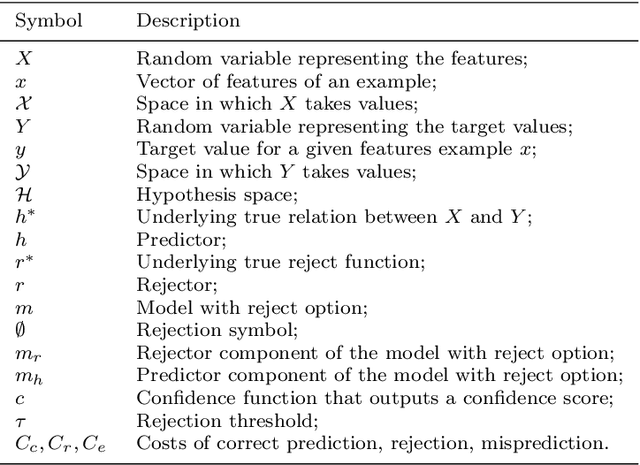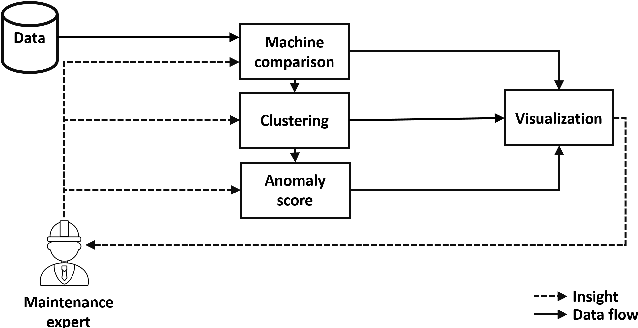Kilian Hendrickx
Machine Learning with a Reject Option: A survey
Jul 23, 2021



Abstract:Machine learning models always make a prediction, even when it is likely to be inaccurate. This behavior should be avoided in many decision support applications, where mistakes can have severe consequences. Albeit already studied in 1970, machine learning with a reject option recently gained interest. This machine learning subfield enables machine learning models to abstain from making a prediction when likely to make a mistake. This survey aims to provide an overview on machine learning with a reject option. We introduce the conditions leading to two types of rejection, ambiguity and novelty rejection. Moreover, we define the existing architectures for models with a reject option, describe the standard learning strategies to train such models and relate traditional machine learning techniques to rejection. Additionally, we review strategies to evaluate a model's predictive and rejective quality. Finally, we provide examples of relevant application domains and show how machine learning with rejection relates to other machine learning research areas.
A general anomaly detection framework for fleet-based condition monitoring of machines
Jan 07, 2020



Abstract:Machine failures decrease up-time and can lead to extra repair costs or even to human casualties and environmental pollution. Recent condition monitoring techniques use artificial intelligence in an effort to avoid time-consuming manual analysis and handcrafted feature extraction. Many of these only analyze a single machine and require a large historical data set. In practice, this can be difficult and expensive to collect. However, some industrial condition monitoring applications involve a fleet of similar operating machines. In most of these applications, it is safe to assume healthy conditions for the majority of machines. Deviating machine behavior is then an indicator for a machine fault. This work proposes an unsupervised, generic, anomaly detection framework for fleet-based condition monitoring. It uses generic building blocks and offers three key advantages. First, a historical data set is not required due to online fleet-based comparisons. Second, it allows incorporating domain expertise by user-defined comparison measures. Finally, contrary to most black-box artificial intelligence techniques, easy interpretability allows a domain expert to validate the predictions made by the framework. Two use-cases on an electrical machine fleet demonstrate the applicability of the framework to detect a voltage unbalance by means of electrical and vibration signatures.
 Add to Chrome
Add to Chrome Add to Firefox
Add to Firefox Add to Edge
Add to Edge